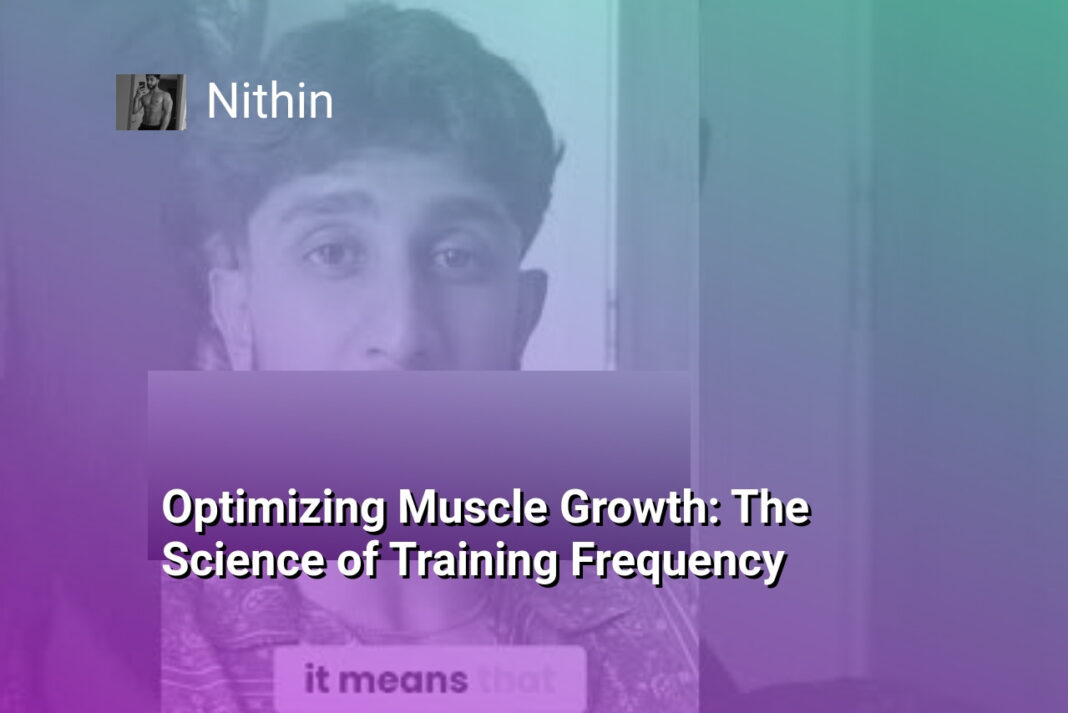The Bottom Line:
- Weightlifting for muscle gain requires both metabolic fatigue and mechanical damage to the muscle fibers.
- The contractile proteins in the muscles must generate sufficient force to overcome the resistance of the weight being lifted, which can cause structural damage to the muscle.
- The activation of the body’s repair response to the damaged muscle proteins leads to an increase in muscle size as the damaged fibers are repaired.
- The depletion of ATP, the energy component that supports muscle contraction, results in metabolic fatigue, where the muscle fibers can no longer effectively fuel the contractions.
- Achieving muscle hypertrophy, or growth, is dependent on the combination of both metabolic fatigue and mechanical damage to the muscle during weightlifting.
The Necessity of Metabolic Fatigue
The Importance of Metabolic Exhaustion
Metabolic fatigue is a crucial component in the process of muscle growth and development. When we engage in intense weightlifting exercises, our muscle fibers are subjected to significant metabolic demands, leading to the depletion of the primary energy source, ATP (adenosine triphosphate). As the muscle fibers can no longer efficiently fuel the contractions required to lift the weight, they become metabolically fatigued.
The Role of Metabolic Byproducts
This metabolic fatigue is accompanied by the accumulation of various byproducts, such as lactic acid and hydrogen ions. These byproducts can alter the pH levels within the muscle cells, creating an acidic environment. This acidic environment triggers a cascade of physiological responses, including the activation of specific signaling pathways that stimulate the muscle’s adaptation and growth processes.
The Stimulus for Muscle Hypertrophy
The metabolic fatigue experienced during intense weightlifting exercises provides a potent stimulus for muscle hypertrophy, or the increase in muscle size. As the muscle fibers become metabolically exhausted, the body perceives this as a challenge that needs to be addressed. In response, the muscle cells initiate a series of repair and growth processes, ultimately leading to an increase in the size and strength of the muscle fibers.
The combination of metabolic fatigue and the resulting physiological responses creates an environment that is conducive to muscle growth. By pushing the muscles to their metabolic limits during weightlifting, we can trigger the necessary adaptations that lead to increased muscle size and strength over time.
Mechanical Damage and Muscle Repair
Muscle Fiber Disruption and Regeneration
The mechanical stress imposed on muscle fibers during intense weightlifting exercises can lead to structural damage within the muscle tissue. This damage, often referred to as “micro-tears” or “muscle fiber disruption,” is a crucial component of the muscle growth process. When muscle fibers are subjected to the high forces generated during resistance training, the contractile proteins and other structural elements within the fibers can become temporarily compromised.
The Inflammatory Response and Muscle Repair
The body’s natural response to this muscle fiber disruption is to initiate an inflammatory cascade. This inflammatory response triggers the activation of various signaling pathways and the recruitment of specialized cells, such as satellite cells, to the site of the damage. Satellite cells are a population of muscle stem cells that play a vital role in the repair and regeneration of damaged muscle fibers.
Protein Synthesis and Muscle Hypertrophy
As the inflammatory response progresses, the satellite cells begin to proliferate and fuse with the damaged muscle fibers, providing the necessary building blocks for the repair and growth of the muscle tissue. This process of muscle fiber regeneration is accompanied by an increase in protein synthesis, which is essential for the expansion and strengthening of the contractile apparatus within the muscle cells. The combination of muscle fiber disruption, the inflammatory response, and the subsequent repair and growth processes ultimately leads to an increase in muscle size, known as muscle hypertrophy.
The Interplay of Metabolic Fatigue and Mechanical Damage
The Interplay of Metabolic Fatigue and Mechanical Damage
Muscle growth, or hypertrophy, is a complex process that involves the interplay between metabolic fatigue and mechanical damage. When engaging in resistance training, such as weightlifting, the muscle fibers must generate enough force to overcome the weight’s resistance. This process not only leads to structural damage within the muscle, but also depletes the available energy sources, resulting in metabolic fatigue.
Structural Damage and the Repair Response
The mechanical stress placed on the muscle during resistance training can cause micro-tears and damage to the contractile proteins within the muscle fibers. This structural damage triggers the body’s repair response, which involves the activation of satellite cells and the synthesis of new muscle proteins. As the damaged muscle fibers are repaired and rebuilt, the muscle tissue increases in size, leading to muscle hypertrophy.
Metabolic Fatigue and Energy Depletion
Alongside the mechanical stress, the muscle fibers also experience metabolic fatigue during resistance training. The ATP (adenosine triphosphate) and other energy components that support muscle contraction are rapidly depleted as the muscle fibers work to overcome the weight’s resistance. This metabolic fatigue can lead to a reduction in the muscle’s ability to continue generating the necessary force, ultimately limiting the number of repetitions or the weight that can be lifted effectively.
The interplay between metabolic fatigue and mechanical damage is crucial for muscle growth. The structural damage to the muscle fibers activates the repair and growth processes, while the metabolic fatigue ensures that the muscle fibers are pushed to their limits, triggering the adaptive response that leads to increased muscle size and strength. By understanding the dual importance of these two factors, individuals can optimize their resistance training programs to maximize muscle hypertrophy and achieve their fitness goals.
Overcoming Weight Resistance through Muscle Contraction
Harnessing the Power of Muscle Contraction
The key to overcoming weight resistance and driving muscle growth lies in the intricate interplay between muscle contraction and the forces acting upon it. When you lift heavy weights, the contractile proteins within your muscle fibers must generate sufficient force to overcome the resistance of the weight. This process not only challenges the structural integrity of the muscle but also depletes the available energy stores, leading to a state of metabolic fatigue.
Mechanical Damage and the Repair Response
The structural damage inflicted on the muscle proteins during heavy lifting activates the body’s natural repair mechanisms. As the damaged muscle fibers undergo the process of regeneration, they become stronger and larger, a phenomenon known as muscle hypertrophy. This adaptive response is crucial for building and maintaining muscle mass, as the body recognizes the need to fortify the affected areas to better handle the demands placed upon them.
Harnessing Metabolic Fatigue for Muscle Growth
Alongside the mechanical damage, the depletion of ATP, the primary energy currency of the muscle cells, results in metabolic fatigue. When the muscle fibers can no longer effectively fuel the contractions or lift the weight, they are forced to adapt. This metabolic stress triggers a cascade of cellular events that ultimately lead to the activation of growth-promoting pathways, further contributing to the overall muscle-building process.
By understanding the dual importance of metabolic fatigue and mechanical damage, individuals can optimize their weightlifting regimens to unlock the full potential of muscle growth. Striking the right balance between these two key factors is the key to unlocking the door to greater muscle mass and strength.
Muscle Growth: The Result of Damaged Protein Fibers
The Muscle Repair Process: Rebuilding Stronger Fibers
Muscle growth is the result of a complex process of damage and repair. When you engage in resistance training, the contractile proteins within your muscle fibers are subjected to significant stress. This stress can cause structural damage to the muscle tissue, leading to the breakdown of protein fibers.
The Role of Satellite Cells in Muscle Regeneration
The body’s natural response to this muscle damage is to activate a specialized type of stem cells called satellite cells. These cells are located between the basal lamina and the sarcolemma of the muscle fibers. When muscle damage occurs, the satellite cells become activated and begin to proliferate, fusing with the damaged muscle fibers to help repair and rebuild them.
Protein Synthesis and Muscle Hypertrophy
As the damaged muscle fibers are repaired, the body increases the rate of protein synthesis to facilitate the growth and strengthening of the muscle tissue. This process, known as muscle hypertrophy, leads to an increase in the size and strength of the muscle fibers. The more significant the muscle damage, the greater the subsequent muscle growth, as the body works to repair and rebuild the damaged tissue.
The combination of metabolic fatigue and mechanical damage is crucial for driving this muscle growth process. The metabolic fatigue caused by the depletion of ATP and other energy substrates during intense exercise signals the body to initiate the repair and growth response. Meanwhile, the mechanical damage to the muscle fibers provides the stimulus for the satellite cells to become activated and begin the process of rebuilding stronger, larger muscle tissue.





